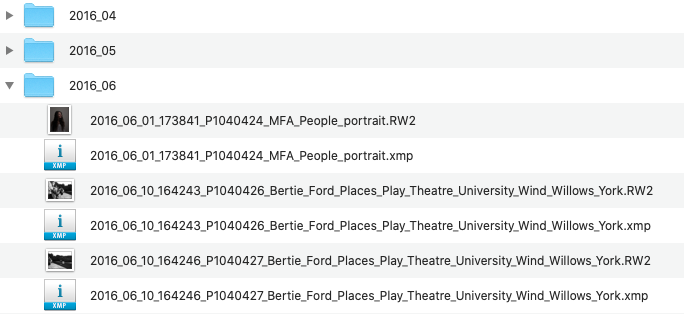Hi Peter,
I had forgotten that XnView allows “companion” files (sidecars) to be associated and then moved and deleted as per the raw “lead” file.
I am using “NeoFinder” which does not seem to have the same option but I am able to write my own utility apps to clean up any .xmp / .dop orphans.
One of the strengths of DxO PL3 is the fact that it creates .dop files which mean I can avoid owning a database of meta data and corrections with the added advantage that I can create my own tools to glue my DAM app to DxO.
One negative of PL2 and PL3 is that if an “openwith” command is issued on a raw file that is in a folder of thousands of images PhotoLab adds all the images to its database which takes an age.
The solution is to drag and drop the image into an album or use a tool that uses the DxO provided Lightroom -> DxO command line tool.
My present plan is to stick with original raw files, .xmp and .dop files and store my images in folders based on month of capture. This should mean that there are never more than a couple of thousand images in a busy month which then means I can allow PL3 to catalog a complete month or even use CaptureOne in session mode given that neither DxO or PhaseOne are anywhere near producing Digital Asset Management solutions that comes close to power and reliability of XnView, NeoFinder or the other stand alone DAM application.
As for Raws, the majority are Tiff files so I think developers could be writing meta data to them.
However, I accept that it complex and difficult to test especially when compared to editing a simple xml file. However there are advantages to having .xmp and .dop files, they are tiny in comparison to the raw files they refer to meaning that changes to meta data and edits get backed up vey quickly and any write errors do not damage the original raw image file.
best wishes
Simon
 not an expert, not even informed at first base( know some basic things that’s it), but is the difference between a tiff and a raw file not the demosiacing principle? so is it possible that camera’s who deliver tiff based rawfiles are processing the sensordata including the demosiacing before storing?
not an expert, not even informed at first base( know some basic things that’s it), but is the difference between a tiff and a raw file not the demosiacing principle? so is it possible that camera’s who deliver tiff based rawfiles are processing the sensordata including the demosiacing before storing?

